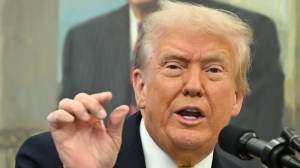Rupee hits 8-month high, ends above 60-mark/dollar
Strong foreign buying of equities & debt boosted domestic currency.
The rupee on Friday breached the 60-mark to close at 59.91 against the dollar for the first time in eight months as heavy foreign buying of equities and debt boosted the domestic currency, making imports cheaper and exports less attractive.
Although the rupee rallied to 59.68 at one stage, the Reserve Bank of India (RBI), which became a buyer of the dollar in the market of late, mopped up the US currency to stem the rupee’s rise. The domestic currency finally settled the day at 59.91, a surge of 40 paise or 0.66 per cent from its previous close. The rupee had logged its intra-day high of 59.52 on July 30, 2013 and registered its closing high of 59.41 on July 29, 2013.
According to dealers, the RBI bought the dollar from the market in the last two-three days in order to balance the rupee’s value as a steep appreciation would impact export-oriented sectors like information technology, garments, gem & jewellery and spices. On the other hand, the rupee’s rise will bring down India’s oil import bill in a big way which can in turn reduce the country’s current account and inflation woes to a certain extent. In short, a strong rupee will hit India’s exports earnings while imports will become cheaper. IT companies, which get dollar revenue, are the first casualties.
Naveen Mathur, associate director, Angel Broking, said, “Rupee has appreciated in the last few trading sessions largely due to strong inflow of foreign funds into Indian equities on the back of positive sentiments both on economic front and anticipated political scenario.” Positive data on current account deficit along with fiscal deficit is one of the major factors boosting prospects for the Indian rupee.
A big reason for the rupee’s rise is the inflow of dollars. Foreign funds have purchased a net $3.7 billion in equities from the start of 2014 until March 27 while in debt, the net inflows stand at $5.8 billion. In March alone, FIIs have invested $ 1.70 billion in the debt market and $ 2.92 billion in the equity market. “The rupee touched the 8-month high on the back of hefty inflows from the foreign investors. However, the RBI saved the day as large bids from the state run banks absorbed much of the inflows,” said Anindya Banerjee, currency analyst, Kotak Securities.
In March, the rupee has gained 3.1 per cent, its best month since September 2013. The rupee had hit an all-time low of 68.80 on August 28, 2013. The rupee has since then gained nearly 13 per cent on account of declining CAD and higher foreign inflows.
Abhishek Goenka, CEO, India Forex Advisors, said the US dollar was giving the onlookers a glimpse of its unusual demeanour against the major currencies and was seen at odds with the current bearings of the US economy.






- 01
- 02
- 03
- 04
- 05

























